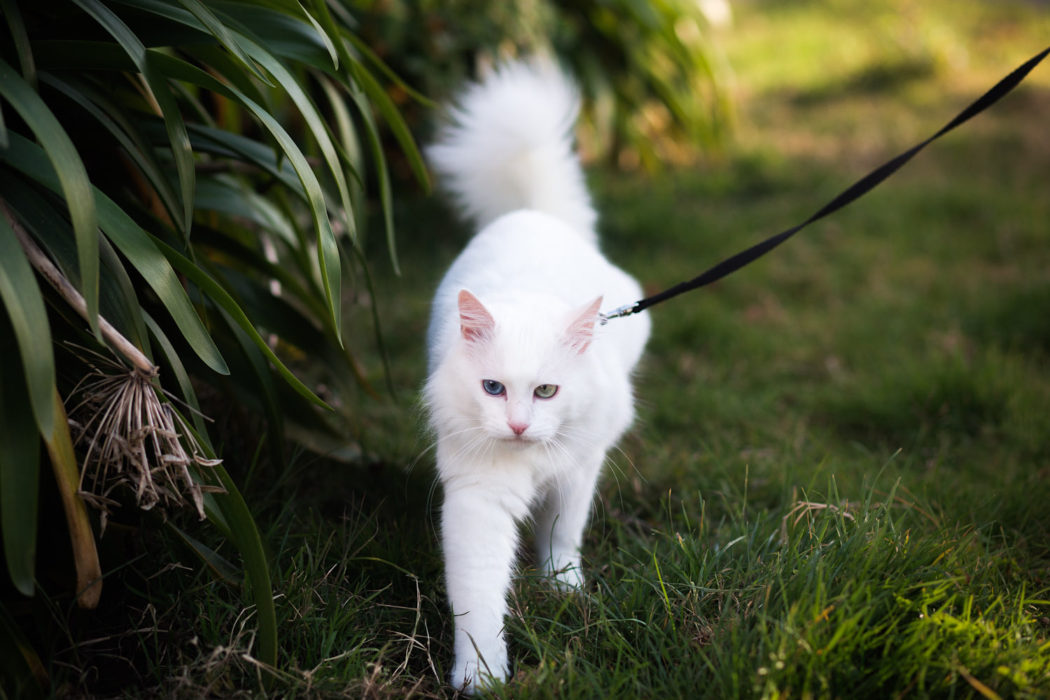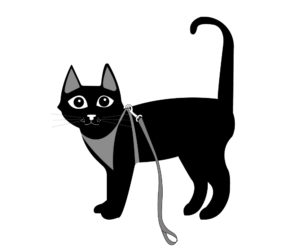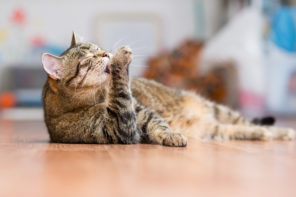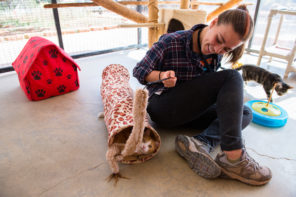Cats may seem like mysterious creatures that are impossible to read, but our felines are actually communicating with us all the time. Through their body language and facial cues, cats can tell us if they’re comfortable, afraid, aggressive or even ready to play.
“Cats are constantly communicating their pleasure, displeasure, boredom, anxiety or illness, but it can be nuanced and easily missed if we don’t take the time to notice,” said holistic cat behaviorist and celebrity cat consultant Layla Morgan.
Being able to accurately gauge your cat’s mood is especially important when taking him outside. If you can tell that your cat is truly enjoying himself, you may want to extend your hike and venture into new terrain, but if your cat seems frightened or on edge, you’ll know it’s time to head back indoors.
The illustrations below will help you better understand felines’ nonverbal cues. However, it’s important to take other factors into consideration when assessing a situation, including the environment, your cat’s personality and your cat’s comfort level with being harnessed and outdoors.
Tail
A straight-up tail with flat fur and a tail held high with a curve at the tip like a question mark both indicate a happy, playful, approachable cat.
A cat that’s carrying his tail low to the ground may indicate that he feels threatened and could act aggressively. However, some cat breeds tend to carry their tails low, so it’s important to know what’s typical behavior for your pet.
This tail position means a cat is anxious or fearful. There’s likely something in the environment that your pet is responding to negatively.
 Tail straight up with fur on end
Tail straight up with fur on end
If your cat’s tail suddenly becomes big and bushy, you’ve got a severely agitated animal on your hands. Cats puff up like this in an attempt to look larger and frighten off the perceived threat.
 Tail moving slowly back and forth
Tail moving slowly back and forth
This slow-swishing tail often means a cat is curious, and the animal’s attention may be focused on something in particular, such as an insect. You may see this tail movement occur just before your cat pounces.
When a feline’s tail is whipping back and forth rapidly or slapping the ground, this indicates an irritated cat that may act aggressively.
Ears
A happy, relaxed or playful cat’s ears will point up and be positioned slightly forward.
When a cat’s ears stand at attention like this, the animal is alert because something has caught his attention.
Ears sideways and partially flattened
This kitty’s ears indicate that he’s irritated, anxious or frightened.
When a cat’s ears go back like this, it’s a sure sign that the animal is fearful or angry and may act aggressively.
Eyes
This kitty is actively taking in the world around him.
This may indicate that a cat is agitated; however, cats’ pupils will also constrict in brighter light.
Dilated pupils
 A cat’s pupils will dilate when he becomes fearful or angry. However, pupils may also dilate in low light.
A cat’s pupils will dilate when he becomes fearful or angry. However, pupils may also dilate in low light.
This action indicates that a cat feels safe and comfortable. In fact, the slow blink said to be a cat’s way of smiling at you.
[separator type=”thin”]
Illustrations by Liz Cox.















